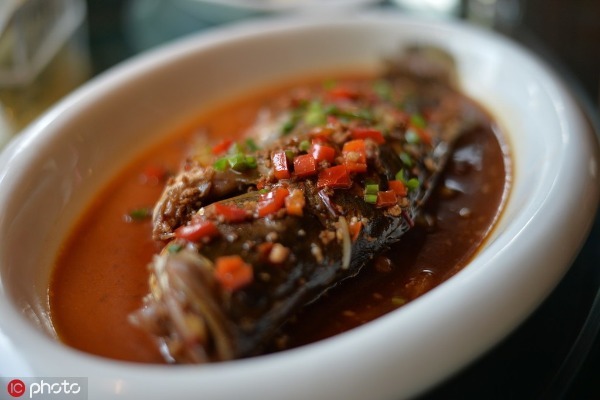Smelly mandarin fish (臭鳜鱼/chòu guì yú)

Smelly mandarin fish, usually spiced with red and green chili, is arguably the most popular Anhui dish across the country. [Photo/IC]
The famous thinker Confucius told us: "If fish and meat go rotten, don't eat them." But, apparently, Anhui people are prepared to repudiate the sage, if smelly mandarin fish (臭鳜鱼, chòu guì yú) is anything to go by.
Highly recommended are the "smelly" preserved mandarin fish that come either grilled, boiled with soup, or stewed. Despite the name, the cooked fish is crisp and tender with a special aroma, and appeals to a wide spectrum of food lovers.
Cooking smelly mandarin fish requires a fermentation ritual in brine at a temperature of around 28 C for several days, until the skin starts to raise a smell. Then the fillets are shallow-fried and braised in soy sauce, so the flesh is fresh and tender.
This delicacy is only around 200 years old, which makes it young by Chinese standards. Back in the day, Anhui fishermen on the Yangtze River used to keep their fish from decaying on the way home by rubbing the skin with salt and carrying them in wooden buckets. The fish stayed fresh even after the week-long journey to Anhui, with only the skin getting a bit whiffy.
The dish's popularity took off after it was featured in the CCTV documentary series A Bite of China, giving the acrid fish the respectability outside Anhui that it badly needed.



